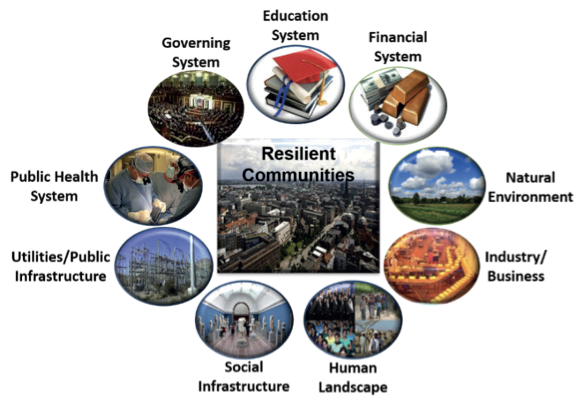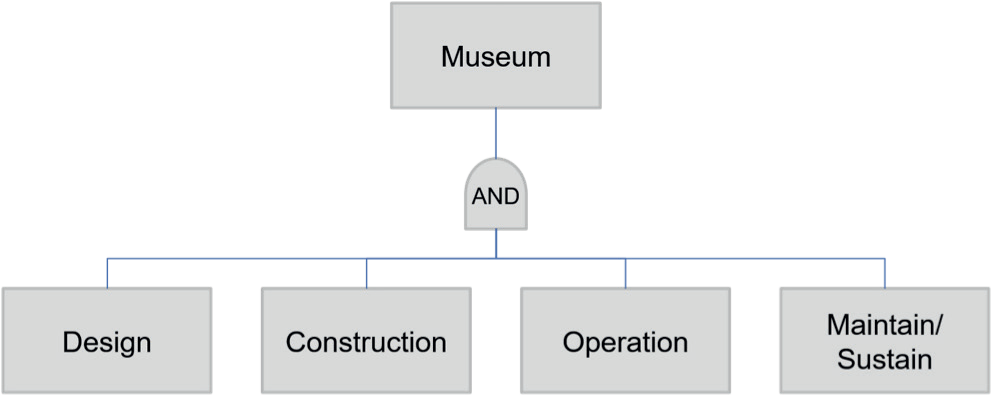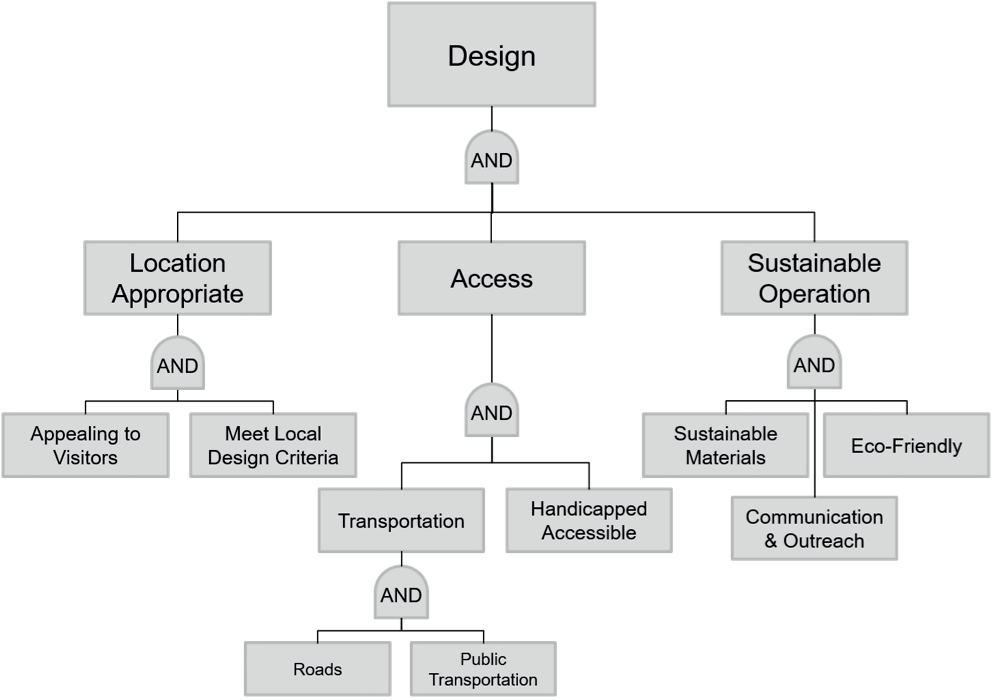Resilient cities require modern infrastructure that can withstand the challenges of a growing population and environmental threats. The community of interest that focuses on building resilient infrastructure utilises classic risk assessment techniques that concentrate on what can go wrong in a city’s infrastructure and then determine where to reduce risk. While traditional risk assessments can provide insights to policy makers on where to allocate investments, the novel approach of a “Success Path” can help policy makers frame the discussion of infrastructure investments from a different vantage point. Argonne National Laboratory has developed the Success Path methodology to understand, analyse and manage operational risk. The methodology challenges stakeholders to envision future cities, starting with the question “What must go right?” The Success Path approach seeks to take the concept of resilient cities to develop avenues for stakeholders to meet their vision for the city. While the Success Path approach typically focuses on critical lifeline infrastructure, this paper introduces the concept of social infrastructure, such as public parks, public libraries and cultural areas, which provide space to build social connections and build social resiliency.
Challenge
In times of global challenge, leaders seek to find ways that cities can withstand a wide range of stresses. In an interconnected world, risks do not respect territorial boundaries. As the T20 process launches for 2021, the COVID-19 crisis has taken over three million lives, resulting in immense human suffering and global economic disruption. The situation has served as a sort of “focusing event”, which has caused the international community to rethink the relationship between globalisation, climate change and pandemic.
In large measure, the pandemic was more pronounced in the urban context than in the rural, primarily due to population density issues. By 2050 urbanisation will exceed 70 per cent globally, making disaster risk management and resilience an acute and increasingly urban issue. While social distancing became a mandate to reduce risk, in many countries in the developing world, density proved problematic, and many communities with overcrowding were unable to social distance in a meaningful way.
As the international community seeks to rebuild, what is the best way to help policy makers learn from the current experience to build more resilient cities for the future? What are the best ways to promote dense and diverse communities, without the downsides of overcrowding? This paper seeks to inform policy makers on the growing body of research on resilient cities and the need to build toolkits to reduce risk in our globally connected world. While there are many global best practices to help communities minimise risk, global challenges such as climate change and the COVID -19 pandemic require solutions tailored to the city’s local economic, environmental, infrastructure and social realities. Our overarching recommendation is for communities to use a “Success Path” methodology to visualise cities for the future and investigate the opportunities to reduce risk in critical systems. The Success Path approach seeks to take the concept of resilient cities from a “hunch-based” approach to create informed avenues for inspections, permitting, regulation, technology and research to enable stakeholders to meet their collective success vision for the city. The paper introduces the importance of investing in both physical infrastructure and social infrastructure.
The Success Path approach is mutually supportive of and consistent with the United Nations “Making Cities Resilient 2030” (MCR) programme. MCR appreciates that cities are on a journey to greater resilience and that involves three steps: making cities safer, preventing risks and promoting innovation and investments. MCR is a dynamic, interactive and inclusive community for the sharing of practices and experiences among local governments and municipalities. Localities can gauge where they are in the resilience journey by using an online “stage assessment tool”. The MCR’s stage assessment tool, combined with the Success Path methodology, can serve as analytical frameworks to target infrastructure investment.
The need for sustained infrastructure investment featured prominently last year under the Saudi Arabian T20 presidency and is a critical issue under the Italian T20 presidency this year. Under Saudi Arabia’s presidency, the T20 infrastructure investment topics included global challenges in a post-pandemic world. There is a great deal of stakeholder consensus on the need to focus on infrastructure investment, but gaining unity of effort to determine priority areas is more challenging to achieve. This policy brief will leverage the critical work of the Japanese and Saudi Arabian insights on infrastructure investment, enhance those efforts by identifying a new methodology for reducing risk and highlight the relevance of social infrastructure in modern cities. As such, the Success Path methodology, we argue, will contribute to Sustainable Development Goal 11 to “Make cities and human settlements inclusive, safe, resilient and sustainable” and to other UN global frameworks such as the Paris Agreement, the New Urban Agenda and the Sendai Framework for Disaster Risk Reduction.
ROLE OF INFRASTRUCTURE INVESTMENT IN ECONOMIC GROWTH
Large-scale infrastructure projects have a role in creating jobs in the short term, during the construction and development phase, and then enabling long-term economic growth once they are operational. Investing in resilient cities provides an opportunity to envision cities with sustainability at the heart of the success path process. The COVID-19 era has led to significant disruptions in our daily lives. Still, it has also provided the international community a unique opportunity to re-evaluate the kinds of infrastructure needed to lead healthy and productive lives.
Thought leaders indicate that the paradigm of low population density, combined with auto-centric planning, has caused problems in certain parts of the developed world. Instead of putting people at the centre of the planning process, cars and mobility often drive urban planning, resulting in investment in roads and highways to meet the demand for personal mobility. The result is often low-density urban areas sprawled across a greater geography, creating “time pollution” for residents and reducing time for civic involvement in our communities.
The COVID-19 pandemic forced many communities to rethink work-life balance issues and consider new approaches to mobility in our personal and work lives. One trend that gained traction during the pandemic was that instead of people going to malls and shops to purchase needed goods and services, they stayed at home and used online services for delivery. In many countries, a second trend is that younger generations have different lifestyle preferences and value the things that cities have to offer: arts, culture, diversity, shared economy, shorter commutes and innovation. (Larson, 2017)
Cities and communities consist of many interconnected systems, such as those represented in Figure 1. The systems include lifeline systems (e.g., water, health, power and energy) and supporting systems like the governing, educational, financial and business systems. The natural environment system is where the cities and communities are located and can be the source for many forces, like weather and extreme natural events that can disrupt the city.
Equally important as the physical infrastructures and systems that link cities and communities are two other systems that are often overlooked when resiliency assessments are made the human landscape and social infrastructure systems. The human landscape system is where the critical actors make and execute decisions and plans. It is also where the real measures of the effectiveness of the decisions and plans are assessed because it is where the people whose lives will be affected by the plans live. The social infrastructure system is where citizens and visitors can go to learn and share in the arts, history, and culture of the cities, regions and countries where they live. It is where feelings of cohesiveness and commonality can be fostered. (Klinenberg, 2018).

Figure 1. High-level Systems for Cities and Communities
New social science theories indicate that investing in the social aspects of a city can pay long-term dividends for daily quality of life and risk reduction in the long term. Thought leaders link investments in things like sidewalks, community centres, public libraries and parks to create what is termed “loose social ties”. Studies have shown that these public spaces play a role in helping a community grow in social and economic dimensions, and investment in social environments can help create areas where social bonds and cohesion grow. Cohesion is the “social fabric” of a society, which binds a community together and plays a role in all phases of risk reduction, relief and rebuilding after a crisis. (Aldrich, 2017). This social fabric is built from supportive connections that exist among individuals, and social capital is at times called “soft resilience” (Ross, 2014). The connections may be strong, as in bonding social capital, which connects tribes, families and close friends. Social ties may be loose, as may be the case for neighbours on the same block or casual acquaintances who frequent the same public library.
We often only think about the importance of social cohesion and social infrastructure when there has been a disruption or tragedy in a community. Focusing on investments in social infrastructure is best done in the prevention phase, so as to help create the social ties that enable a community to cope with adversity and rebound after a traumatic event. A multi-stakeholder approach, leveraging the Success Path methodology, can help communities pinpoint the priorities for projects that can create environments where diverse community members have creative spaces to meet neighbours and build friendships that create social ties. Though it may be tempting to sideline investments for social infrastructure in favour of other physical infrastructure initiatives, we encourage policy makers to apply the same Success Path approach used with hard infrastructure to determine the investments most needed in communities.
ORIGINS OF THE “SUCCESS PATH” METHODOLOGY
Argonne initially developed the Success Path methodology for the U. S. Bureau of Safety and Environmental Enforcement (BSEE) the regulatory body for U.S. offshore energy as a tool to assist BSEE in their efforts to improve safety following the Deepwater Horizon incident. The idea for the methodology was inspired by a more traditional application of a key feature in probabilistic risk assessment, the so-called “fault trees”. In a fault tree, one maps a system by taking into account all of the pathways in which the system can break or otherwise malfunction, and the possibility of that failure, when compounded with others, to lead to a large event with devastating consequences.
Fault tree analyses are widely accepted and used in nuclear and other energy technologies. However, when attempting to apply fault trees to US offshore oil and gas operations from a regulatory standpoint, it quickly became clear that fault trees are far too complex as the possibilities of failures in these systems are vast. Instead, the research team decided to invert the analysis. Instead of asking “What can go wrong?” the question was turned around to the more direct question of “What must I/we do right to ensure success?” and the approach was dubbed Success Paths. Once a system is mapped in a Success Path, one can then assign the probability of each component succeeding (or failing) based on previous data and expert judgment. This data measures relevant metrics. For offshore energy, the metric is personnel safety and the protection of the environment. However, it can be easily translated into other impacts, such as economic cost or climate impact.
This way of thinking revealed a fundamental need for holistic understanding of and communication about a system at all organisational levels. Success Paths not only helped to show that there is often a lack of context in understanding the impact of a single component in a complete system, it also provided a way to fix this issue. Throughout this collaboration, the methodology was applied to evaluating a number of operations or potential operations offshore. Further, this collaboration made it clear that Success Paths have wider applications, beyond energy.
The original Success Path analysis applications have been focused on improving the operation of offshore energy systems, but the approach can be easily adapted to the analysis of how to develop more resilient cities. Figure 2 provides a high-level representation of a Success Path that can result in the development of an element of the social infrastructure in a

Figure 2. Representation of a Success Path for the Development of a Museum as Part of a City’s Social Infrastructure
city, a museum. The activities leading to the development of the museum are all required, as noted by the AND function. Success Paths can also be applied to different approaches that can be developed as the goals of the system. As an example for a museum, it could be developed with a parking lot OR a parking garage.
In the simple example shown, four high-level activities are defined for the museum to be a significant contribution to a city’s social infrastructure. They all can be expanded to any level of detail to address features such as those noted below. Figure 3 gives an example of a hypothetical expansion of the Design component.
– What are the key elements and considerations in the design of the system?
– What are the considerations for the construction or implementation of the system?
– What are the considerations for the operation of the system to meet its goal?
– What are the considerations for the maintenance of the system to keep it successful?
One thing that keeps the Success Path mapping systematic is the use of elements in Boolean logic: AND and OR gates. Here, AND gates imply that all elements under the gate must be met in order for the top event to succeed. In other words, if at least one element is missing, then the top event fails. In further extensions of a Success Path, OR gates may appear, which mean that it is enough for at least one of the events under the gate to succeed in order for the top event to succeed. In Success Paths, OR gates mean that there is plenty of redundancy and backup systems (or avenues for success). A large number of OR gates often indicates that there are redundancies built into the system and redundancies are key to system resilience.

Figure 3. An Example of the Expansion of the Success Pathways for the Museum Design component
For the purpose of this paper, we’ve kept the example of a Success Path to very high level and limited the development to only a small number of elements. However, it should be noted that a well-thought-out Success Path can be both wide and deep. The depth of a Success Path depends on the target audience and should be tuned accordingly. For example, key decision makers need only to see the top few levels of the overall Success Path, whereas parties closer to the implementation will need more detailed information in terms of what each element entails.
Policy makers and planners have the flexibility to determine which units are most relevant to the ultimate goal of a particular project. For example, while the Success Paths for offshore energy used the metrics of safety and pollution prevention as key indicators, a social infrastructure project may have unique metrics such as number of visitors or frequency of hosted cultural events to bring together diverse communities.
In conclusion, using methodologies such as the Success Path, practitioners create a vision for resilient cities, with information that can be tuned and scaled up or down depending on the right audience and context. It is possible to use the approach to visualise an individual component and how it can be aggregated up to the system level; and metrics can be defined using the Success Path method, leading to measures of performance of the overall system or any one part of it.
Relevance to the G20: The Italian Presidency frames the topic of infrastructure from a human and sustainability dimension. Under the T20 Japan portfolio, we see policy recommendations that reinforce the need to consider the interconnected nature of critical infrastructure, with a focus on transportation investments (T20 Japan, 2019a) and the importance of infrastructure investment in the developing world (T20 Japan, 2019b). This policy process helped to create the G20 Principles for Quality Infrastructure Investment, which serves as a starting point for the topic of infrastructure investment. During the Saudi Arabian T20 process in 2020, topics included an assessment of the impact of sea-level rise on infrastructure (T20 Saudi Arabia, 2020). This Success Path paper builds upon the established foundational work of the T20 and G20 and seeks to reinforce the need to use data-driven and analytically sound planning processes to determine the highest returns for investments.
REFERENCES
Aldrich, Daniel (2017), “The Importance of Social Capital in Building Community Resilience”, in W. Yan and W. Galloway (eds.), Rethinking Resilience, Adaptation and Transformation in a Time of Change, Cham, Springer, https://doi.org/10.1007/978-3-319-50171-0_23
G20 (2019), G20 Principles for Quality Infrastructure Investment, https://www.mof.go.jp/english/international_policy/convention/g20/annex6_1.pdf
Klinenberg, Eric (2018), Palaces for the People: How Social Infrastructure Can Help Fight Inequality, Polarization, and the Decline of Civic Life, New York, Broadway Books
Larson, Kent (2017), “How Can We Design Stronger, Smarter Cities Globally?”, in Solve at MIT, webcast, May 18, https://www.youtube.com/watch?v=TPYnFaRhm3s&ab_channel=Solve-MIT
OECD (2012), Perspectives on Global Development 2012, Social Cohesion in a Shifting World, https://doi.org/10.1787/persp_glob_dev-2012-en
Ross, Ashley D. (2013), Local Disaster Resilience: Administrative and Political Perspectives, New York, Routledge
Speck, Jeff (2013), Walkable City: How Downtown Can Save America, One Step at a Time, New York, North Point Press
T20 Japan (2019a), Building Resilient Infrastructure Systems, https://t20japan.org/wp-content/uploads/2019/03/t20-japan-tf4-5-building-resilient-infrastructure-systems.pdf
T20 Japan (2019b), Pursuing Quality of Infrastructure for Sustainable Growth, https://t20japan.org/wp-content/uploads/2019/03/t20-japan-tf4-4-pursuingquality-of-infrastructure-for-sustainablegrowth.pdf
T20 Saudi Arabia (2020), Impact of Sea Level Rise and Extreme Events on Infrastructure Investment and Global Supply Chain, https://www.g20-insights.org/policy_briefs/impact-of-sea-level-riseand-extreme-events-on-infrastructuredevelopment-in-global-trade-and-logistics-supply-chain/
World Economic Forum (2020), The Global Risks Report 2020, 15th Edition, https://www.weforum.org/reports/the-globalrisks-report-2020








